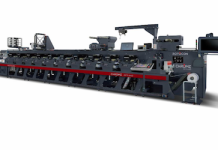According to John Tschohl of the Service Quality Institute, when things do go wrong, it is how you recover and delight the customer that truly sets you apart from other companies. Opportunities for service recovery are numerous. While companies may not be able to prevent all problems, they can learn to recover from them.
A good recovery can turn angry and frustrated customers into loyal ones. It can, in fact, create more goodwill than if things had gone smoothly in the first place. When you falter (and we all do) you can count on customers contacting you to let you know what you have done. If it is a phone call, you can expect to hear ranting and raving and people saying things that are rude and inappropriate. If they are in your place of business, they will confront you face-to-face and it is up to you how to diffuse the situation and put a smile on that customer’s face.
The surest way to recover from service mishaps is for employees on the front line to identify and solve the customer’s problem. All this has to happen in 60 seconds or less. Doing so requires decision making and rule breaking — exactly what employees have been conditioned against. Employees have been taught that it is not their job to alter the routine. Even if they would like to help the customer, they are frustrated by the fact that they are not allowed to do it. Worse yet, they do not know how.
A study done for the U.S. Office of Consumer Affairs found that in households with service problems with potential costs of around $100 (R1500), 54% would maintain brand loyalty if their problems were satisfactorily resolved.
Four steps to save the customer within 60 seconds:
1. Act quickly. Apologise. You must respond to the complaint within 60 seconds. That is when the magic happens.
2. Take responsibility. Most employees shove off the problem and blame everyone else. Customers know when they are being passed along the chain and they do not like it.
3. Empower employees to make a fast decision. Each front-line employee should be able to take action quickly. They should not have to ask for managers to get an approval or pass the buck to them.
4. Take action and compensate. Give away something that has high value and low cost. Customers will be pleasantly surprised and delighted with your company if you not only make things right, but make things better.
Every organisation has products and services that have low cost and high value you can give away when your company screws up. The more generous you are, the bigger the impact. If you are too cheap, it will have little impact. A hotel could upgrade you to a suite. A restaurant can offer everyone free dessert. A computer company can extend the warranty by one year. Your out-of-pocket cost is peanuts. With Covid-19 you cannot afford to lose a customer.
To be able to provide great service recovery, the employees need to feel that they have the freedom to do so. Pre-authorise front-line employees to spend a capped amount to fix customer problems. Front-line employees should have the power to resolve more than 95 percent of customer issues without having to pass the customer on to another person. Allow employees to give out free coupons, accept returns, give refunds and take other needed remedies without having to consult anyone. They can offer customers a range of options for resolving their problem and get the job done. The principle behind this is that customers are more satisfied with their encounter if the first person they contact about a problem fixes things. It lets employees focus on solving problems. It is pure magic.
Remember, customers will reciprocate your helpful actions. When you resolve failures quickly and effectively, acknowledge and apologise for the problem, and then respond to their need. Most customers will pay you back with continued or increased loyalty, goodwill and even repurchasing. It means that even major service failures are opportunities to show the reliability of your customer support functions and provide the most positive experience possible.
According to a study by The Wharton School, reducing customer attrition by 5 to 10 percent can increase annual profits by as much as 75 percent – the stakes are high. No business can afford to lose customers, if only because it costs much more to replace a customer than it does to retain one — five times more. Those that go out of their way to please customers and correct problems or screw-ups will soon have many more. Someone once said, ‘Take care of your customers, or someone else will.’
John Tschohl is a professional speaker, trainer, and consultant. He is the President and founder of Service Quality Institute with operations in over 40 countries. He is considered to be one of the foremost authorities on service strategy, success, empowerment and customer service.
John Tschohl
www.johntschohl.com





















